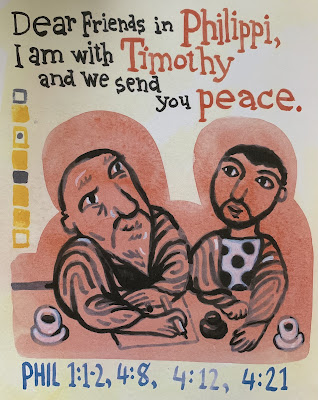Author: Kathy
Stinson
Illustrator: Dusan Petricic
Summary:
All day Dylan hears the music in his head! When he asks to return to the station, hoping the man will still be playing, Dylan’s mom asks, “What man?” That night, Dylan hears on the radio that the violinist he experienced is “one of the finest musicians in the world,” Joshua Bell, who played on “one of the most valuable violins ever made.” But still few people stopped to listen. Dylan now understands his strong response. He is swept up again, this time by the radio's recording of that morning’s music. AND this time, his mother listens and dances with him!
Age Appropriateness: 3 and up
Formats other than Book: Tablet
Scripture Connections: Eli told Samuel to return to bed and say, "Speak Lord, for your servant is listening. (1 Samuel 3:9); Be still and know that I am God." (Psalm 46:10); To answer before listening, that is folly and shame. (Proverbs 18:13); Jesus' transfiguration story in the 3 synoptic gospels (see next note); Martha had a sister called Mary who sat at the Lord's feet listening. (Luke 10:39); Everyone should be quick to listen, slow to speak, and slow to become angry. (James 1:19)
Connections to The Revised Common Lectionary: I listed this book in Trinity Treasures (my preschool curriculum based on the RCL & picture books) for 1 of the Transfiguration lessons. In that particular lesson, I focused on listening, because the disciples are instructed by God to listen to Jesus.
PBT Applications: Read this book to tweens or teens and talk about godly sounds. If they will not respond well to a picture book, begin a story this way: Once there was a student who had to rush to school each morning.... They will all relate! Do give the author credit for the story. Show the video and then begin a discussion as described above in my comments.
If you are interested in learning more about my Trinity Treasures, a scripture based preschool Sunday school curriculum that features picture books & children’s Bibles, contact me at hannaschock@bellsouth.net. Right now, free lessons are emailed if you agree to fill out the monthly feedback form.









































